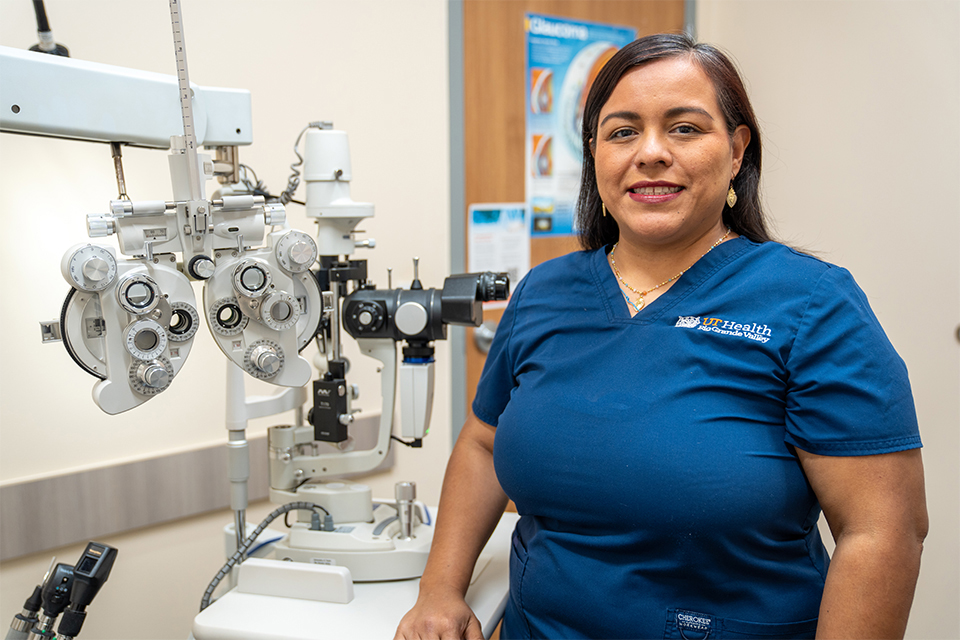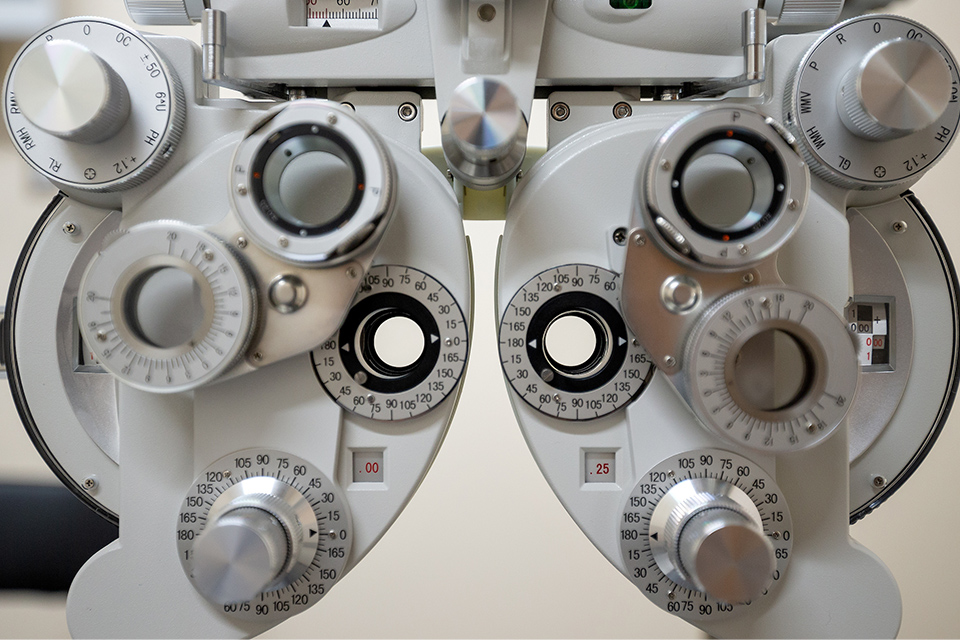By Heriberto Perez–Zuñiga
RIO GRANDE VALLEY, TEXAS – AUG. 21, 2025 – New backpack? Check. Fresh pencils? Check. But what about your child's vision?
If they're squinting in class, losing their place when reading or struggling to stay focused, their eyes might need some attention, too.
August is Children's Eye Health and Safety Month, and Dr. Lorena Flores-Hernandez, an optometrist and glaucoma specialist at UT Health RGV, is encouraging families across the Rio Grande Valley to make regular eye exams a priority as the school year begins.
"Healthy vision is critical for learning and development," Flores-Hernandez said. "Kids don't always know how to express when they can't see clearly, many just assume what they see is normal. That's why early and routine exams are so important."
MAKE PREVENTION A HABIT
According to the American Optometric Association, children should have their first comprehensive eye exam between 6 and 12 months of age, another between ages 3 and 5, and then yearly starting before first grade.
"These exams help catch things early, like lazy eye, crossed eyes or strong prescriptions that could affect development," Flores-Hernandez said. "Without early detection, some vision issues can become permanent."
Even more challenging, says Flores-Hernandez, is that many eye conditions in children present no symptoms at all.
But there are some telltale signs parents can look out for:
- Squinting or closing one eye.
- Frequent eye rubbing or blinking.
- Tilting the head when viewing objects.
- Headaches, eye fatigue, or avoiding reading.
- Poor hand-eye coordination or clumsiness.
- Trouble concentrating or falling behind in school.
"If your child avoids reading or struggles in sports, it might be more than just a learning style or motor skill; it could be their vision," she said.
SCREEN TIME AND SCHOOL STRAIN
With tablets, phones, and laptops now an integral part of everyday life, digital eye strain has become a growing concern, especially during the back-to-school season.
"Kids today are spending more time on screens than ever before," Flores-Hernandez said. "Too much screen time can lead to blurry vision, headaches, dry eyes and trouble sleeping."
She recommends families follow the 20-20-20 rule. Every 20 minutes, take a 20-second break and look at something 20 feet away.
Other tips include using night mode on devices, limiting screen time before bed, and encouraging outdoor play.
Undiagnosed vision problems can make school feel overwhelming and frustrating for kids, and the effects can be emotional as well as academic.
"If children can't see clearly, they may lose interest in learning, struggle with comprehension or even act out in class," Flores-Hernandez said. "Vision issues can hurt their self-esteem and make it harder to connect with their peers."
As academic demands grow, healthy eyesight becomes even more important.
"Healthy vision is important to giving kids the tools they need to thrive, whether in school, in sports or in life," she said.
Need to schedule your child's eye exam? Visit UTHealthRGV.org to learn more and book an appointment today.
ABOUT UTRGV
The University of Texas Rio Grande Valley (UTRGV) was created by the Texas Legislature in 2013 as the first major public university of the 21st century in Texas. This transformative initiative provided the opportunity to expand educational opportunities in the Rio Grande Valley, including a new School of Medicine and a School of Podiatry, and made it possible for residents of the region to benefit from the Permanent University Fund – a public endowment contributing support to the University of Texas System and other institutions.
UTRGV has campuses and off-campus research and teaching sites throughout the Rio Grande Valley including Brownsville (formerly The University of Texas at Brownsville campus), Edinburg (formerly The University of Texas-Pan American campus), Harlingen, Weslaco, McAllen, Port Isabel, Rio Grande City and South Padre Island. UTRGV, a comprehensive academic institution, enrolled its first class in the fall of 2015; the School of Medicine welcomed its first class in the summer of 2016, and the School of Podiatric Medicine in the fall of 2022.


